
Identify investment opportunities and sales with the
most comprehensive and up-to-date source on African
power projects

Get continuously updated and detailed information on more than 7,500 power projects across all African countries, including the history of the project, financiers and operational status.
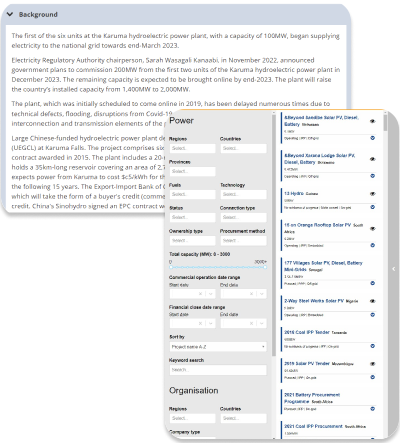

Use our integrated search and portfolios of owners, developers, suppliers and financiers to understand the relationships and the wider competitive market.
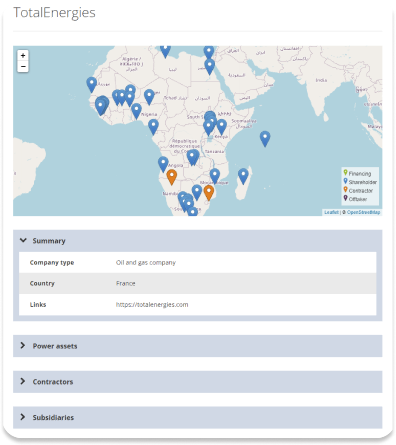

Use our project pipeline to analyse aggregated statistics and understand future trends.
We don’t use estimates, so figures correspond to real power plants on the ground.
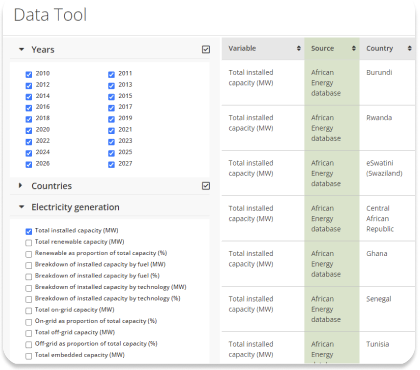

Our sourcing of project information is enhanced by our 25 years of experience reporting on the African energy industry.
We understand this market and know where to get accurate information.
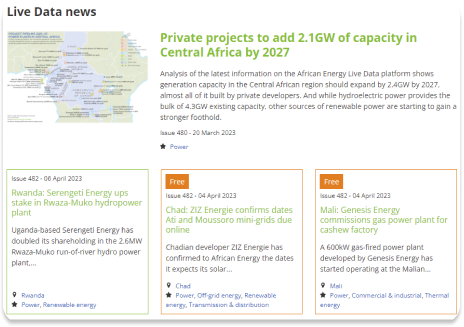

The Live Data API is the most flexible and detailed way to access our platform. It uses an industry standard RESTful API to query Live Data and outputs JSON that is easily integrated into your workflow.
Receive project information as it gets updated and make strategic decisions before anyone else.


With the Live Data API you’ll have access to the most up-to-date information straight from our platform for your data analysis. No more downloading endless excels.


The API allows you to delve deeper into our data to uncover hidden trends, patterns, and correlations, giving you a greater understanding of projects and the competitive environment and allowing you to build more informed business development strategies.


The API can enhance your own large scale data analysis systems. Whether you’re using Excel, Python, PowerBI, or any other data analysis tool, the Live Data API seamlessly integrates into your existing workflows. This means you can continue using your preferred tools while tapping into Live Data.

Best for teams to get an updated view of the market.
An annual or six-month subscription to the Live Data platfrom that will inform your business development with the most up-to-date power project information.
Get flexible access to a customised package of countries or power generation fuels.
You can also use our dedicated support team for specific data requests.
Best for individuals looking to get a snapshot of the market.
Get an instant view of the projects and companies involved in your chosen markets. You'll get the same level of information as a subscription, just without the updates.
Data is delivered in an excel-based format.
| SUBSCRIPTION | ONE-OFF | ||
|---|---|---|---|
| Access to all power projects and organisations | ✔ | ||
| Access to the Live Data platform and map search | ✔ | ✔ | |
| Continuous updates and monitoring of power projects and organisations | ✔ | ||
| Use of the Data Tool – access to the latest power statistics and more | ✔ | ||
| Project notifications | ✔ | ✔ | |
| Direct access to the Live Data support team | ✔ | ||
| Option to add an API connection | Contact us | ||
| Subscription to the African Energy newsletter | Bespoke plans are available to combine Live Data with a newsletter subscription | ||
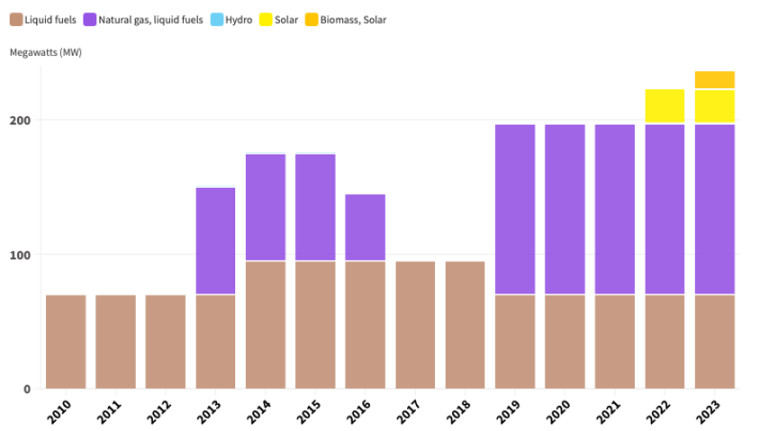
A proposal to add 300MW of solar PV in a Greater Cotonou industrial zone would reshape the small West African economy’s power sector if implemented, but analysis of the African Energy Live Data platform suggests a more incremental approach will be necessary given Benin’s rocky record of project implementation, alternative GTP ambitions and the sheer size of what is proposed compared to operating capacity.
Issue 503 - 08 April 2024
Our approach is to use primary materials such as annual reports, licence and permitting documents wherever possible and to engage with the companies and authorities developing the projects to verify what is happening first hand.
If our staff don’t have a high degree of confidence in the information, then it will not go into the database – more research is required by our team.
There are three ways to access the data:
Got a question? Book a demo or request pricing.
Unfortunately, we don't offer free trials for Live Data but we are more than happy to demo the platform to as many of your team as many times as required. Just ask!